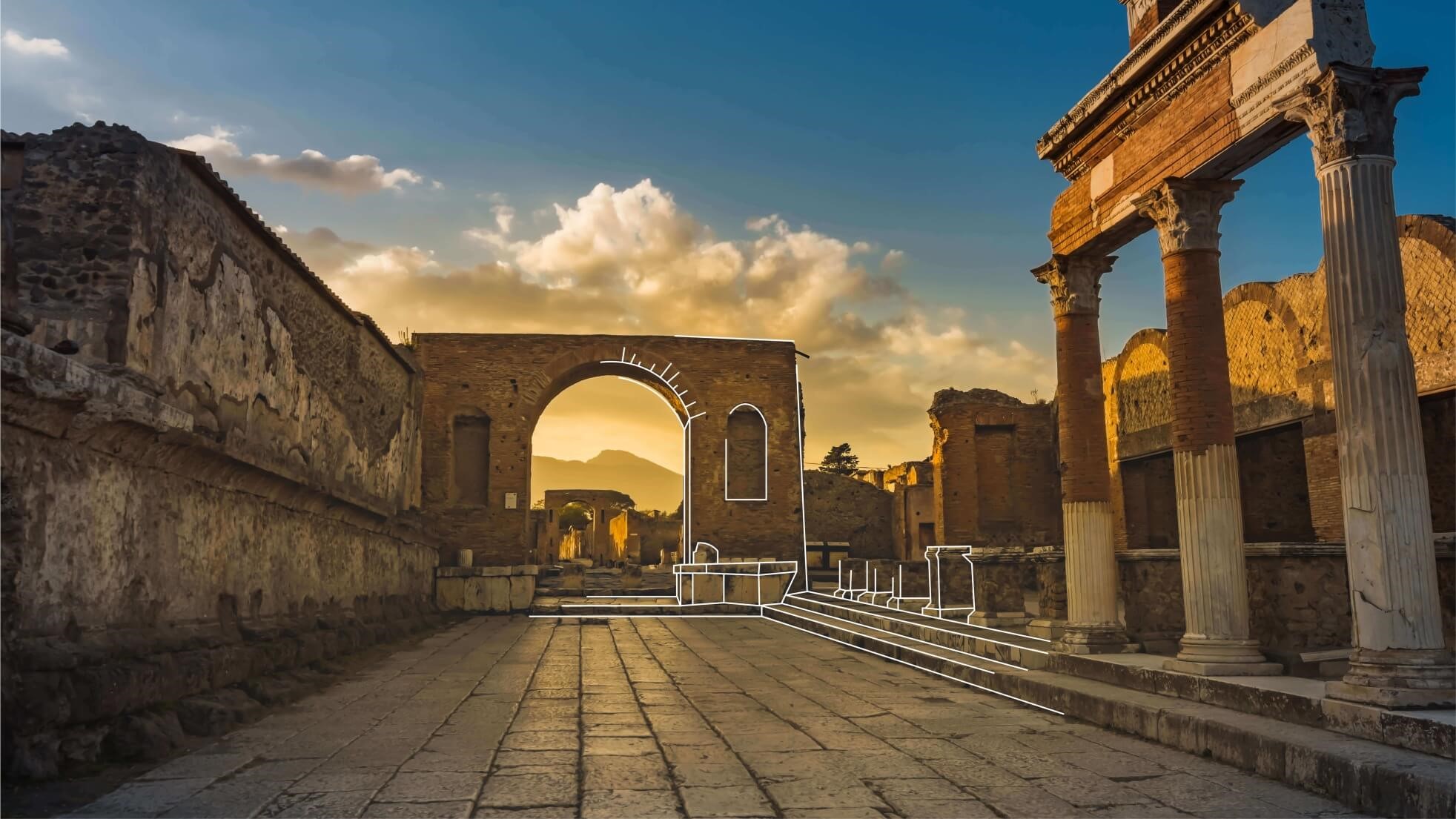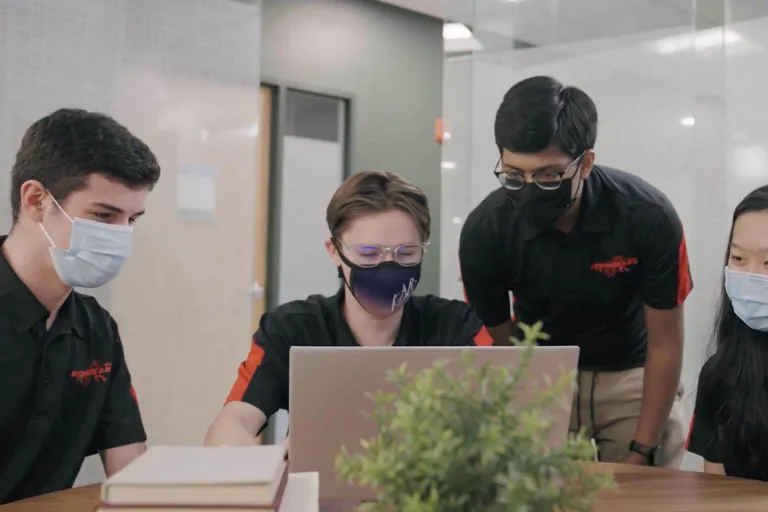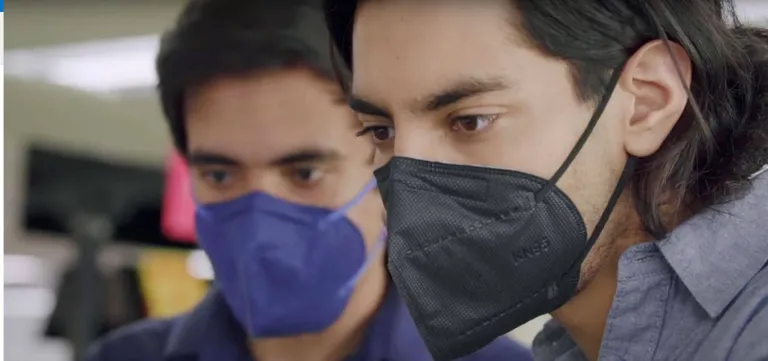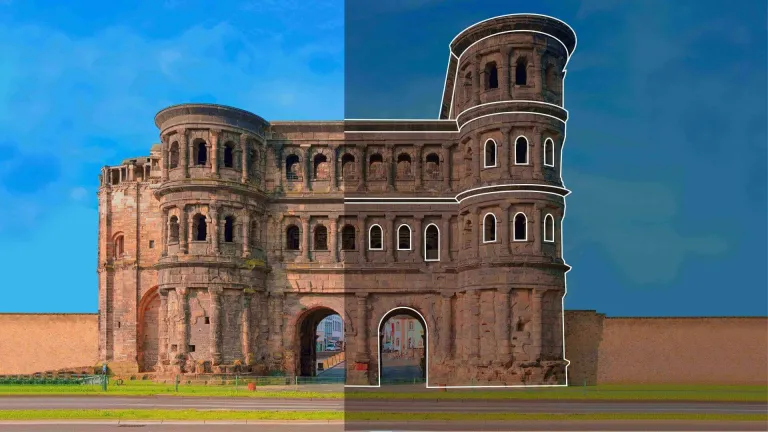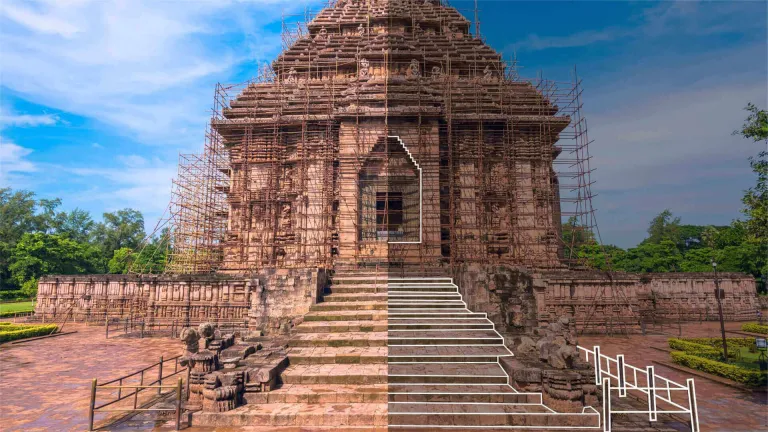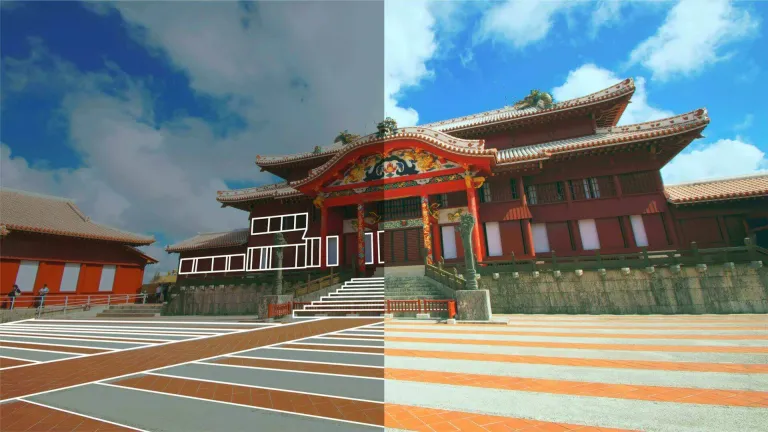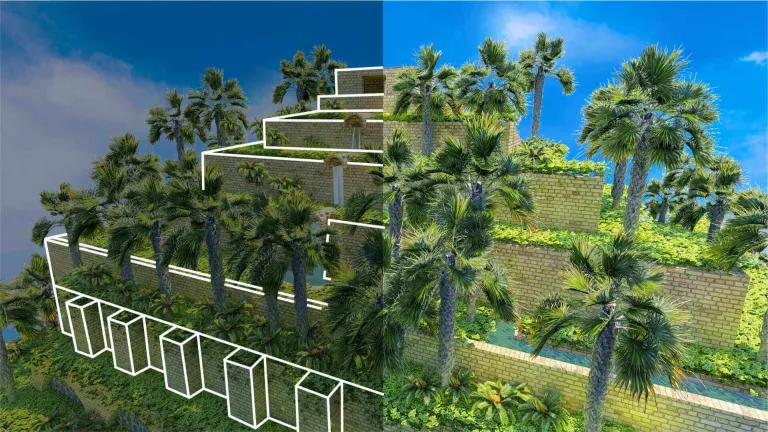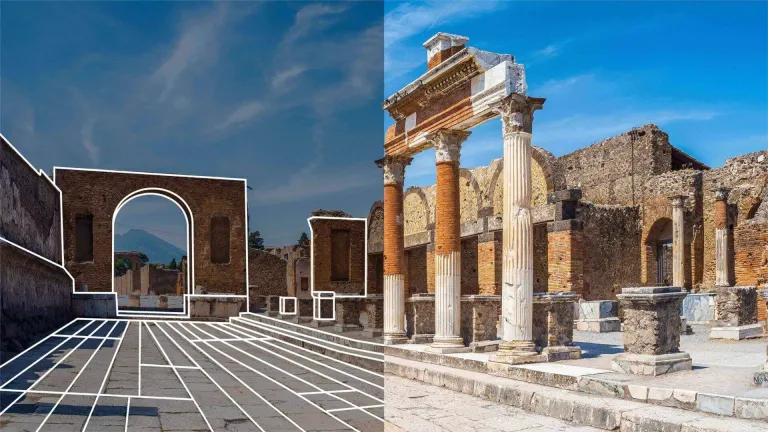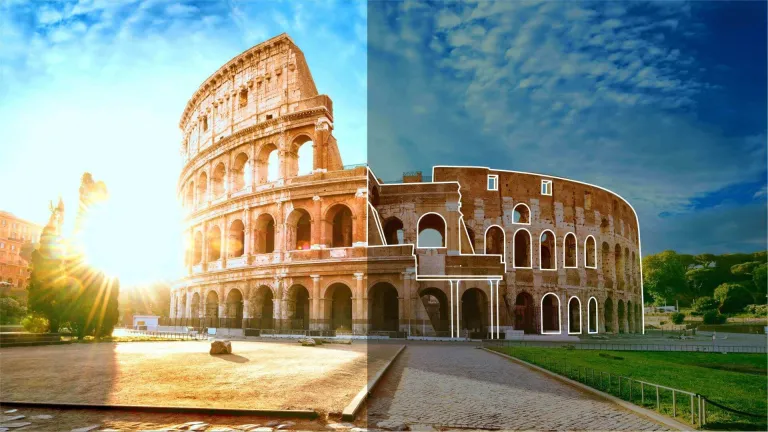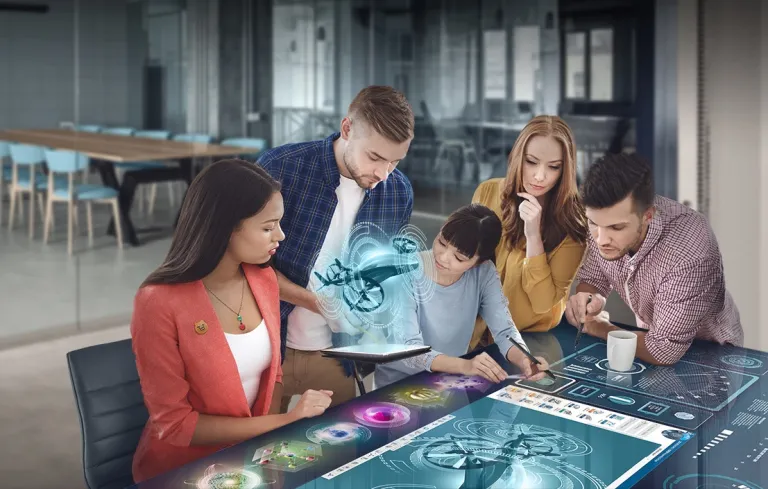Act for Heritage & Future
How can understanding the past help us better navigate the future?
Living Heritage: reconstructing UNESCO World Heritage sites as 3D models
From generation to generation, humanity builds on the discoveries of its ancestors. In this tradition, Dassault Systèmes focuses on improving the future. But we also use our knowledge and know-how to rediscover and learn from our shared past by creating 3D virtual experiences of ancient sites.
Through “The Only Progress is Human” campaign, we are passing this knowledge and know-how to future generations. Thanks to six exciting, student-led virtual archaeology models of UNESCO World Heritage sites, everyone can now embark on virtual travel experiences through time and around the globe.
Navigate the future by reconstructing the past
Using our solutions, students created virtual twin experiences of six historic sites and monuments as they may have existed in ages past.
Click on each monument, immerse yourself in this virtual tour and travel the centuries:
Educational innovation and virtual archeology
Time has damaged or destroyed many iconic sites of antiquity. But Dassault Systèmes experts have mentored six student teams in reconstructing some of these as 3D monuments on the 3DEXPERIENCE platform. These virtual twin experiences are scientifically accurate, 3D-simulated time capsules of these sites and of how they influenced life.
By giving young minds practical exposure to our 3DEXPERIENCE platform, the Living Heritage program advances virtual archaeology, education innovation and engineering work experience. It also demonstrates the power of 3D simulation software to help us better understand our shared past. Better understanding, in turn, helps humanity map its way to a better future.
6 teams running and supported by Dassault Systèmes
- Germany
- India
- Japan
- Mexico
- Netherlands
- United States
- Mentors testimonial

Trier - University of Applied Sciences
Team LDPF (from left to right) : Ron Froese,Finn Jöchel, Lars Schier, Kristofer Lacour,

Team India (from left to right) : Rohan Ruidas, Shireen Hossain, Shiba Reddy, Dibyajyoti Nayak, Vallangi Jatin Krishna, Prasanta Kumar Mohanty, Avinash Kumar Singh, Laxmidhar Reddy, Lipsa Patra.

Team Japan (from left to right) : Yudaj Nishimura, Yuki Tanaka, Jun Suzuki, Naoki Yasunaga.

TM Racing (from left to right) : Juan Pablo Rojas Ibarra, Luis Osornio Ugalde, Zyanya Veronica Zuniga Mediana, Michelle Sanchez Guerrero.

Team Rembrandts (from left to right) : Tijn van Bommel, Tessel Meulepas, Maxime Arts, Rens Kappert.

Team Stromegears (from left to right) : David Barber, Shoumik Kundu, Kayvon Tousekani, Thomas Dou, Elena Wu, Shalin Sinha, Susan Shea, Jon Eggert.
Dassault Systèmes mentors' testimonial
6 Dassault Systèmes’ People mentored student teams from all around the world to give new life to iconic masterpieces that have shaped human history thanks to the 3DEXPERIENCE platform.
Porta Nigra by team Germany
Porta Nigra is a UNESCO World Heritage site built around 170 AD. It served as one of four Roman gates for entering to the city of Trier, Germany. Although never finished, Porta Nigra is the last of the four still standing.
Konark Sun Temple by team India
Konark Sun Temple is a UNESCO World Heritage site dating to about 1250 AD. It was dedicated to the Hindu sun god Surya and carved from stone to resemble a massive chariot, complete with wheels and horses.
Shuri Castle by team Japan
Shuri Castle is a UNESCO World Heritage site that served as the Ryukyu Kingdom’s palace from 1429 to 1879. Fires and military battles damaged the temple many times, but it was always rebuilt. In 1945, the Battle of Okinawa nearly destroyed the temple . Fire heavily damaged it in 2019.
The Hanging Gardens of Babylon by team Mexico
Ancient writers have described the Hanging Gardens as a gift from the Babylonian king Nebuchadnezzar II to his homesick wife, Amytis. Although listed as one of the Seven Wonders of the ancient world, no archeological evidence of the gardens has been found. Historians theorize they may have been destroyed by an earthquake.
Pompeii by team Netherlands
The 79 AD eruption of Mount Vesuvius destroyed Pompeii, a thriving city of 20,000, in a matter of minutes. Important features of the ruins, frozen in time at the moment ash and lava inundated the city, include the forum, marketplace, court and bathhouses.
The Colosseum of Rome by Team USA
Construction on the Colosseum of Rome began in 72 AD under Emperor Vespasian and completed eight years later, in 80 AD, by Emperor Titus. Despite its immense age, it remains the world’s largest standing amphitheater, capable of hosting an audience of 65,000.
3DEXPERIENCE EDU
Never stop growing
Jumpstart your structural design career and level-up today!
The six student teams that participated in the Living Heritage Challenge gained valuable experience in structural design, 3D modeling and simulation software, and virtual archaeology, preparing them for varied careers in the Workforce of the Future. They also became certified on the 3DEXPERIENCE platform. Best of all, the Living Heritage virtual twin experiences they created are virtual archaeology treasures for current and future generations to explore and enjoy.
Whether you are a student or a working professional, 3DEXPERIENCE EDU is your passport to new adventures in knowledge and know-how.
Want to grow your skills or earn a certification? Start your learning adventure today with the Academic Certification Program.
